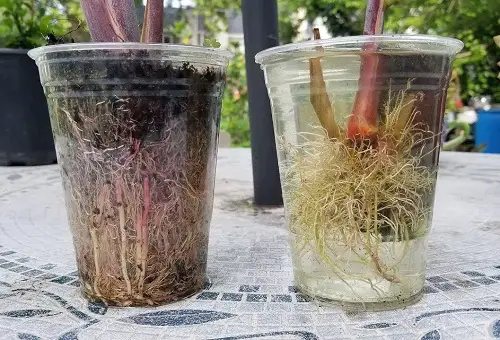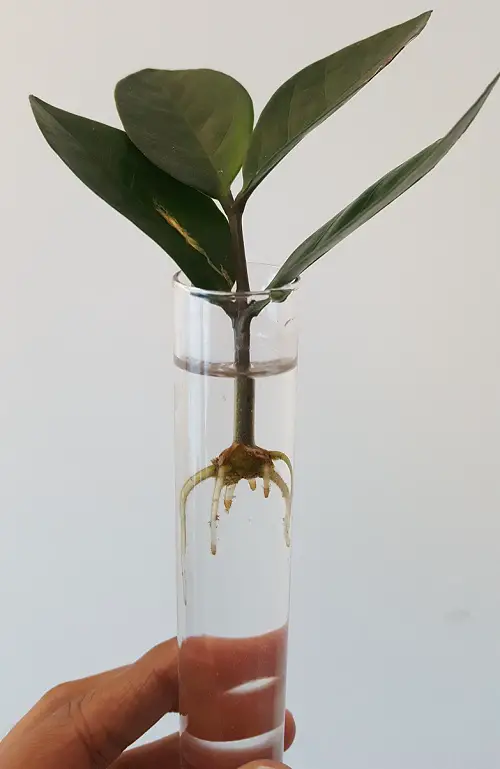How to transfer any cutting from water to soil is a common concern among gardeners. Let’s find some helpful guidance in this article!

Transferring a cutting from water to soil is a delicate process, and it needs to be carefully executed to avoid any damage to it. We have compiled some useful tips that can help you through this transition.
How To Transfer Any Cutting From Water To Soil?

Do note that changing the growing medium abruptly may cause the plants to go into shock and these methods will tone down the chance of it by a huge margin!
1. Timing is Key
When you are planning to transfer a cutting from water to soil, make sure that the roots have developed sufficiently—not too short or excessively long.
Aim for an ideal root length of 1-3 inches, and proceed with the transfer once they reach this length.
2. Ease into Change
About a week before you plan to transplant, start getting your plant acquainted with the new medium by adding small amounts of soil to the water. A teaspoon of it, every 5-6 days would be fine. Do this for a month.
This gradual introduction helps the roots adjust to the different textures and nutrient compositions of the soil, so it’s not a total shock to the system.
3. Prepare the Soil Mix
To replicate the future growing conditions of your plant, use a lightweight potting mix that drains well. A combination of peat, perlite and vermiculite (in equal quantity) works wonders by balancing moisture retention with proper drainage to prevent root rot.
4. Planting the Cutting

Gently remove your cutting from the water and carefully cleanse it off any clinging debris. Make a little hole in the center of your prepared potting mix and place the cutting right in there.
Carefully spread out the roots, making sure the base (where the roots meet the stem) is level with the soil surface.
5. Water and Humidity
As soon as your new plant is settled in its new home, give it a thorough watering. This helps the soil settle around the roots and gets rid of any lingering air gaps. Do it every time the topsoil feels a little dry to the touch at 1/2 inches deep.
For the first few weeks after transplanting, keep the humidity levels high by covering your plant with a plastic bag or using a humidity dome.
6. Location and Care
Find a nice spot for your plant where it can get some indirect light—refrain from keeping the cutting in direct sun at this point.
Keep an eye on the soil moisture, making sure it stays consistently moist but not waterlogged.
7. Monitor Plant Health
As your cutting adjusts to its new environment, keep a watchful eye out for any signs of stress like drooping leaves or discoloration. If you notice any of those symptoms, it might be time to make some adjustments to the watering, light, or humidity levels.


